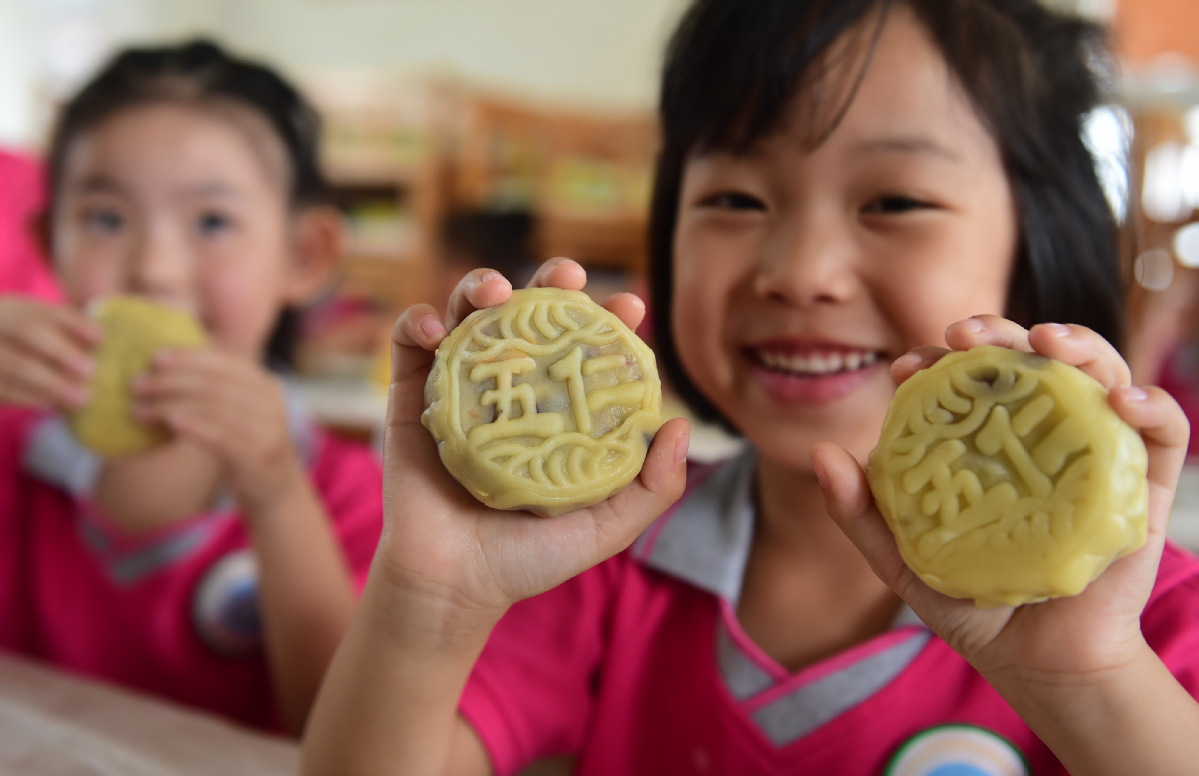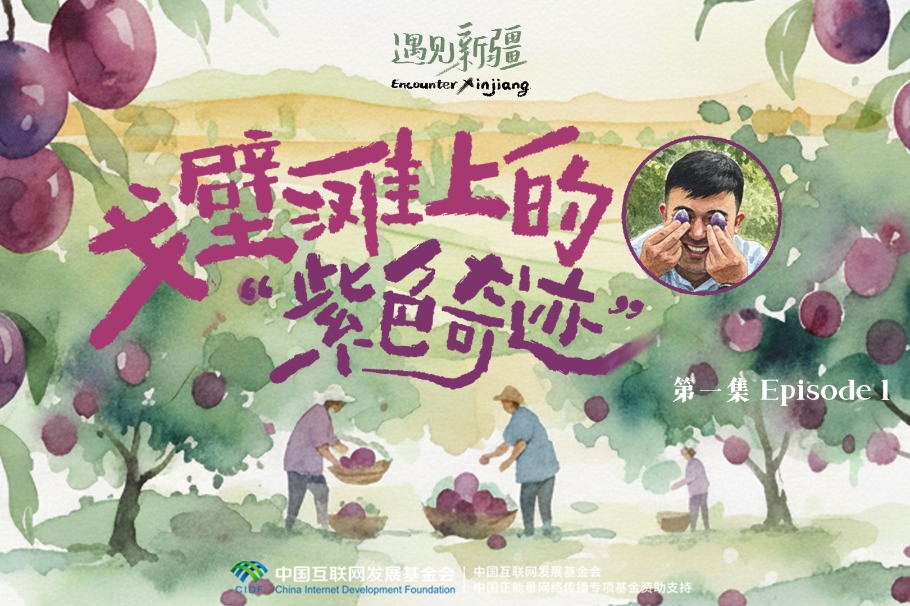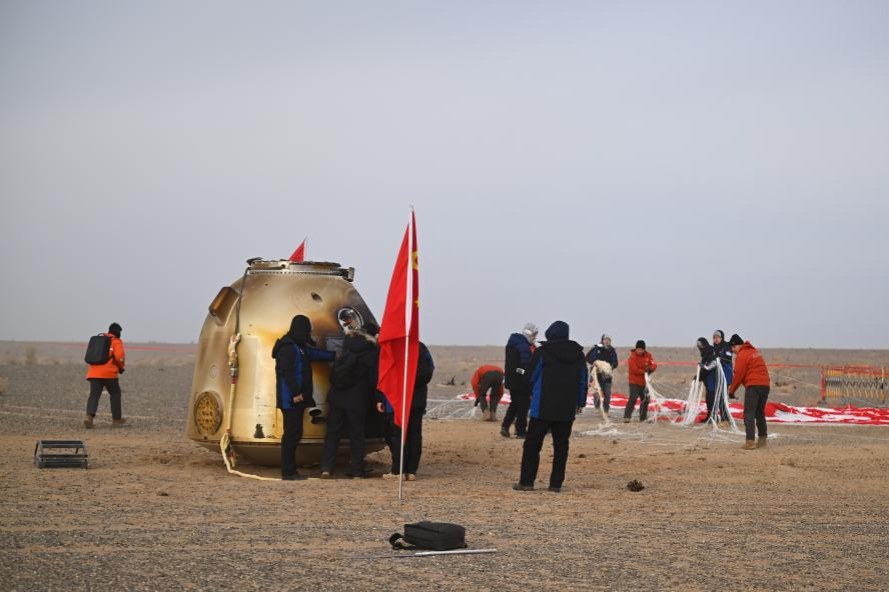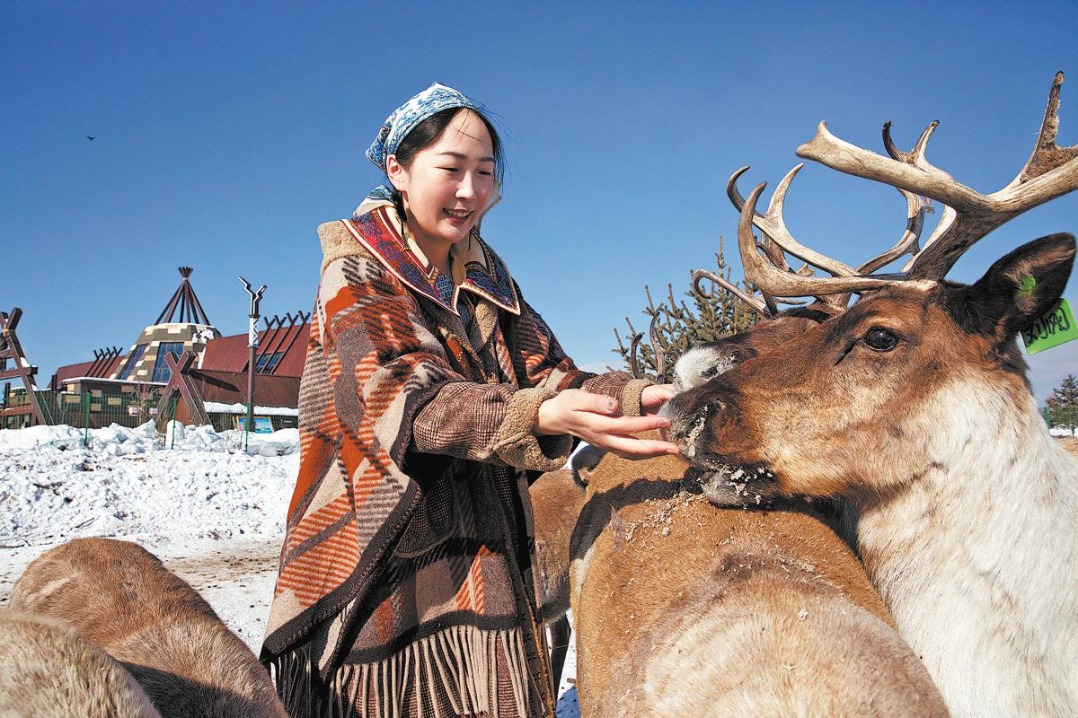Moon bathes festival in its glow


Traditions have changed over time, but one aspect remains constant
Each year during the Mid-Autumn Festival, residents from Dawulei village in Wuxue, Hubei province, gather in front of the main ancestral hall to make offerings to the moon.
When the moon rises in the night sky, the ceremony, which has 21 steps divided into five stages, begins in earnest.
More than 60 male villagers, most of them from the Lei clan, parade in colorful masks and white silk pants and robes while carrying staffs topped with white lanterns.
They circle a small lake in front of the ancestral hall, with the lamps held aloft and the white orbs reflected in the water.
A key part of the ceremony involves a village leader daubing a red flag and a black flag with blood drawn from a live chicken and making an offering to the ancestors.
Onlookers bow their heads and pray silently. As the ceremony reaches its finale, female villagers dressed in gold and red join hands and dance joyfully in a circle. At the end of the dance, spectators run to collect mooncakes and fruit that have been tossed in the air by village leaders.
The elaborate ceremony is how Dawulei celebrates the festival and gives thanks for its harvest.
The village's Mid-Autumn Festival rituals date to the Qing Dynasty (1644-1911). The ceremony is held each year, and a large-scale version is staged every five years or whenever there has been a bumper harvest.
The village ceremony was scaled back after 1945 but was resumed in full in 2009.
Xiao Fang, a professor of folklore at Beijing Normal University's School of Sociology, said the ceremony showcases many aspects of Chinese culture, such as honoring ancestors and showing respect for seniority.
"It's an opportunity for the Lei clan to enhance cohesion in the village," Xiao said.
From elaborate rituals to eating mooncakes, Mid-Autumn Festival customs have gradually changed over recent centuries. However, the modern version of the holiday still includes traditions and rituals that date back thousands of years, according to Xiao.
The holiday is also known by other names that reflect its agrarian origins and the celebration of harvest time, such as the fruit, pumpkin, moon and reunion festivals.
"Traditional Chinese culture has a unique relationship with the moon, and the moon is always a symbol of gentleness and light," Xiao said.
In the Qin (221-206 BC) and Han (206 BC-AD 220) dynasties, making offerings to the sun and the moon were restricted to imperial rituals, Xiao said.
In the Sui (581-618) and Tang (618-907) dynasties, it became fashionable for writers to expound on the qualities of the moon, and royal households' exclusive hold over paying homage to the celestial body faded.
During the Song Dynasty (960-1279), both rich and poor worshipped the moon, and children were allowed to dress as adults and burn incense as an offering. Male scholars prayed for good results in the imperial examinations, while young women asked to be blessed with beauty.
"In the Ming (1368-1644) and Qing dynasties, worship of the moon changed significantly and the god of the moon gradually became an icon, especially for females," Xiao said, adding the god took various names and forms.
According to Xiao, Chinese ethnic groups also have their own moon-worshipping customs and rituals.
The Oroqen ethnic people from Northeast China put a basin of water on the ground and set tributes around it, while people from the Tu ethnic group in Qinghai province use a tub of water to "collect" the reflection of the moon.























